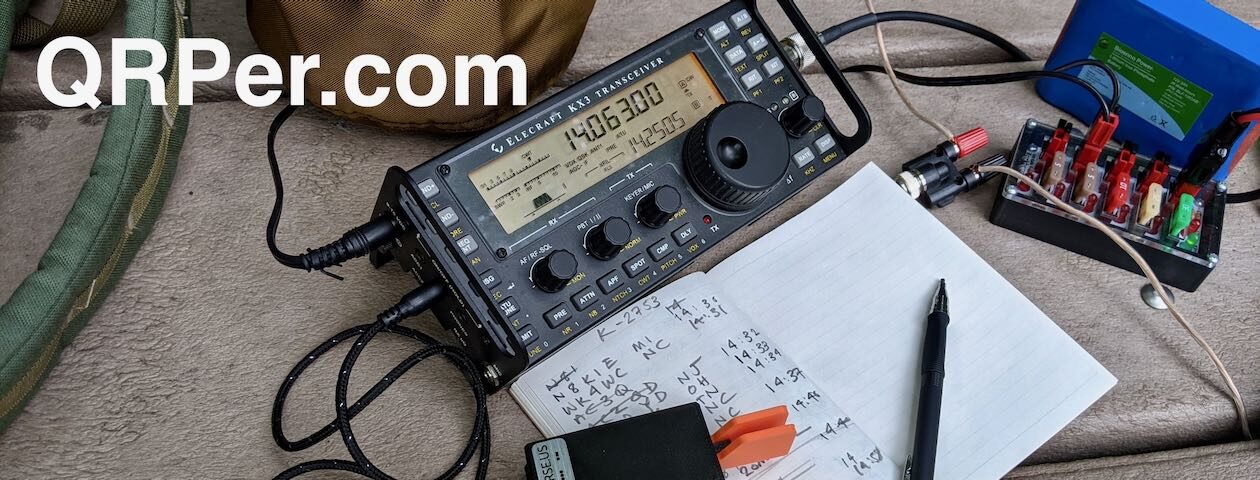Many thank to Bob (K4RLC) who shares the following guest post:
POTA with Blackbeard in Bath, North Carolina
de Bob (K4RLC)
While in Eastern North Carolina for the North Carolina QSO party, I decided to take a trip to visit historic Bath, North Carolina, the oldest city in our state and one of the original 13 colonies.
Bath, named after the English Earl of Bath, was founded in the late 1600s. It soon became the first port for the Carolina colony, then soon thereafter, the center for the colony’s government.
While I enjoy the wilder side of POTA, like state forests and game lands, and the mountains of SOTA, these historic sites often have a vibe that lets the mind wander back in history.
Additionally, two historic houses had recently been added to the POTA program: the Palmer-Marsh House (US-10388) and the Bonner House (US-10263). The Palmer-Marsh House was built in 1744 by Captain Michael Coutanch, the original governor who came from the Isle of Jersey. The house was sold around 1762 to Robert Palmer, then later to the Marsh family around 1805. It is deemed the oldest standing house in North Carolina. While this state historic/POTA site had been activated on SSB, it had not been activated on Morse code yet, and it was appealing to me to be the first CW activator.

It was a quiet clear Saturday morning with beautiful Carolina blue skies and chilly temps when I arrived at the Palmer-Marsh House.
The house itself was closed and open only to guided tours, however there were large open grounds with pathways, benches, and a family cemetery for the Marsh family. I had my North Face RECON pack full of the Elecraft KX2 set up I’ve taken overseas, and ready for almost everything.
On the bench near the cemetery there were no overhanging ancient oak branches. I set up the KX2 and laid down the screen wire counterpoise. On top of that, I put a 17 foot Chameleon whip which is resonant on 20 M CW, without wire counterpoises, and running only 5 watts. The key was the CW Morse SP4 key.
Not knowing what would happen, I called CQ and was quickly answered by multiple stations wanting to work this new POTA site for the first time.


This entire section of town is loaded with historic houses. If you walk a few blocks down Main Street to Bonner Point, turn left on Front Street, and turn left again on King Street toward the visitor center, you will cover over 300 years of history, in a few blocks.
While the visitor center in the old school building is a POTA site, I chose the other POTA site in Bath – the Bonner House, built around 1830. This is the second house on the site, as John Lawson, the founder of Bath, built a house there which no longer stands. The entire original town boundary is considered a National Register Historic District.
I walked down Main Street to Bonner Point and Bonner House. From the Bonner House, I was looking into the Pamlico River sound fed by Bath Creek, with its deep blue water.
It took a moment to process, but I soon decoded waveforms of a school of dolphins playing close to the shore. They were incredibly graceful and efficient breaking the water. My over analytic mind tried to discern a pattern – could they be responding to the sound of Morse code? Or, simply a highly evolved graceful sea creature at play.


In just a few hours, propagation seemed to have changed so it was difficult to make the requisite contacts still on 20 m CW with the same KX2 and antenna setup. My mind wandered back in history to the historical street sign to my right that said that Edward Teach had made his home here in 1713, while taking a brief break after the King’s pardon.
Most people know Teach by his more famous nickname of Blackbeard the Pirate. My mind time traveled, and I wondered what it would be like to have sailed with Blackbeard and his outrageous exploits in his time, or what he would’ve thought of the KX2 in our time!

Not wanting to leave the site right away, I enjoyed the typical lunch my YL Alanna K4AAC makes for a me on sojourns away from home – a really good peanut butter and jelly sandwich with fruit punch Gatorade and a Reese cup. It’s great brain food for all the cognitive processing needed for Morse Code.
After a wonderful morning taking in Bath and being the first to activate the Palmer-Marsh house for POTA CW, I packed up my KX2 kit and headed off for nearby Goose Creek State Park (US-2731) where the other Dr. Bob , W4TTX and I were setting up as NC4QP, a bonus station for the North Carolina QSO party.
 As there is still one more POTA site to activate, a return trip to historic Bath is on the list to take in its wonderful ambience, watch dolphins and daydream about Blackbeard playing radio.
As there is still one more POTA site to activate, a return trip to historic Bath is on the list to take in its wonderful ambience, watch dolphins and daydream about Blackbeard playing radio.


































































































